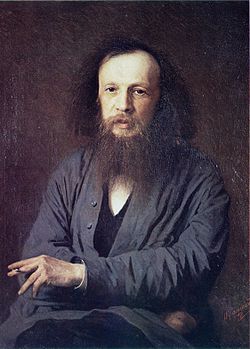
The periodic table of elements is a table that contains all known chemical elements represented. It has 18 groups and 7 periods.
During the 19th century, chemists began classifying known chemical elements according to their physical and chemical properties. In 1860 the first International Congress of Chemists was organized in the German city of Karlsruhe to unify the criteria for classifying elements.
According to the International Union of Pure and Applied Chemistry (IUPAC), the periodic table of chemical elements was born on March 1, 1869.
How many elements are in the periodic table?
Currently, the periodic table contains 118 chemical elements.
The last elements introduced in the periodic table were elements 113 Nihonium (Nh), 115 Moscovium (Mc), 117 Tennessine (Ts), and 118 Oganesson (Og) on December 1, 2016.
Structure of the modern periodic table
The modern periodic law states that the physical and chemical properties of the elements are the periodic functions of their atomic numbers.
The chemical elements are ordered within the modern periodic table according to their atomic numbers (the number of protons). We do not use atomic mass (protons plus neutrons) because an atom of a particular chemical element can have a different number of neutrons without changing the element. The modern periodic table law does not consider the number of electrons, either.
The periodic table is organized into periods and groups. The groups are represented in columns, while the periods are represented in rows.
The elements are arranged so that elements with similar electronic configurations are on top of each other. It is also ordered so that items with similar behaviors are in the same column.
Groups of the periodic table
A group or family is a column in the periodic table of chemical elements. Typically, groups have more prominent periodic trends than blocks and periods.
There are eighteen groups in the modern periodic table. In particular, group 18 contains all noble gases. Noble gas is called this because it does not react with anything in general.
Chemical elements that belong to the same group have similar chemical properties. In addition, there is a clear tendency to increase atomic numbers. But in some parts of the table, the horizontal and vertical similarities can be just as important.
Properties of the elements within the periodic table group
Elements in the same group tend to exhibit patterns of atomic radius, ionization potential, and electronegativity. From top to bottom, the atomic radius of the elements will increase per group as there are more electrons. In addition, the valence electrons will be farther from the atom's nucleus.
From the top, each chemical element has a weaker ionization potential. It is because it is easier to remove an electron and the force with which the atoms are attached is weaker.
Period of the periodic table
A period of the periodic table corresponds to a horizontal row. Usually, the most evident periodic trends are seen in the groups. However, there are certain regions of the table where the trends in the horizontal direction are more prominent.
The elements of the same period in the table show trends in ionization potential, atomic radius, electron affinity, and electronegativity.
From left to right in a period, the atomic radius generally decreases. It is because, in this direction, each element in the table has an extra electron and proton, and the electrons approach the nucleus. This decrease in atomic radius ensures that over time, the ionization potential will also increase from left to right.
Electronegativity grows, as does the ionization potential. This increase is due to the nucleus attracting electrons.
Blocks of the periodic table
The blocks are the specific regions of the periodic table of the elements. The block name corresponds to the shell containing the last electron.
In the periodic table, there are the following blocks:
-
The “s” block: includes the first and second groups corresponding to hydrogen, helium, alkali metals, and alkaline earth metals.
-
Block "p" includes the last six groups. Among other elements, it includes noble gases and metalloids.
-
Block "d" includes groups between 3 and 12. This block contains all transition metals.
-
Block "f" has no group numbers. It is often represented below the rest of the table. The "f" block the actinides and lanthanides.
Who made the modern periodic table?
The Russian chemist Dmitri Mendeleev published the first recognizable periodic table in 1869 in work called "Principles of Chemistry." The way we organize chemical elements today still follows Mendeleev's proposal.
 At the same time, the German chemist Julius Lothar Meyer, a contemporary competitor of Mendeleev, also worked with the idea of creating the first periodic table. Meyer ordered the elements based on the physical properties of atoms, but his proposal was not so popular.
At the same time, the German chemist Julius Lothar Meyer, a contemporary competitor of Mendeleev, also worked with the idea of creating the first periodic table. Meyer ordered the elements based on the physical properties of atoms, but his proposal was not so popular.
Since its inception, Mendeleev's periodic table of elements has been completed and expanded as other elements have been discovered or synthesized.
However, some scientists believe that the final version was achieved thanks to the periodic law presented at the beginning of the 20th century by Henry Moseley.
